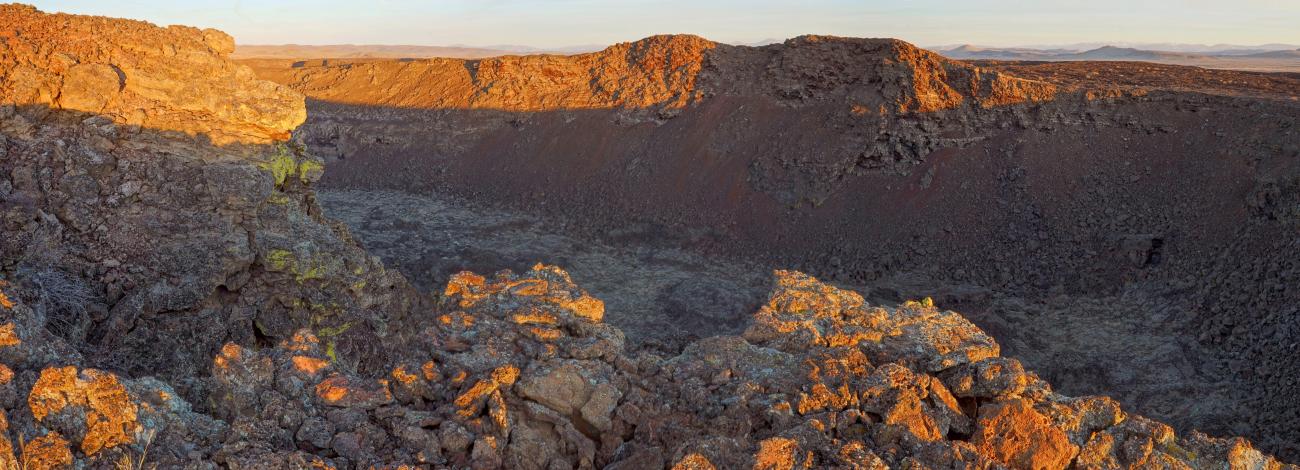
Black Butte Wilderness Study Area
Values
Black Butte Crater is a subsidence crater up to ½ mile wide and 80 to 200 feet deep. It is an inactive volcano of recent origin (4000 to 6000 years ago) capping and rising 200 feet above the northeast end of an older lava flow field. The crater is made up of a complex six-part depression with steep walls. The crater contains a great variety of volcanic features in close proximity to each other including a lava lake, vents, pressure ridges, subsidence craters, lava blisters, domes, buttes, benches, cliffs, surfaces of fractured sheet flows broken into polygonal plates up to four feet across and one to six inches thick, lava channels, and pahoehoe and aa lava flows. The basalt varies in color from black to purplish-black on the exposed desert varnished surfaces and a dull, brownish-red on the under surface. The features are not covered by vegetation and provide an excellent opportunity to view volcanic landforms. The variety of features is of scenic, scientific and educational interest, and offers an exceptional interpretive opportunity. The older lava flow field is vegetated with a mixed shrub-grass community. The rugged volcanic features provide outstanding opportunities for geologic study, photography, camping, and hiking, though camping and hiking are challenging due to the rough lava.
Visitation Information
From Shoshone, Idaho, drive north on Highway 75 approximately 18 miles and turn west (left) on West Magic Road leading to Magic Reservoir. In approximately ¼ mile a kiosk and parking area are on the right. The WSA is on the south (opposite) side of the road. There are no trails to the WSA here, but it is possible to walk cross country from this parking area southwest toward Black Butte Crater.
Visitor Advisory
Visitors should come prepared for rugged backcountry travel and hiking. It is best to visit in the spring and fall due to severe temperature extremes during the summer and winter months.
